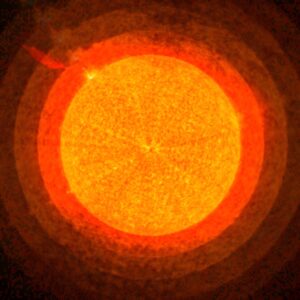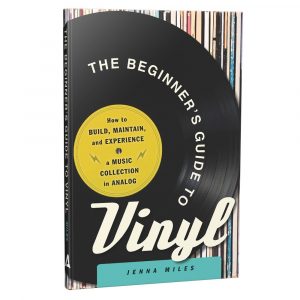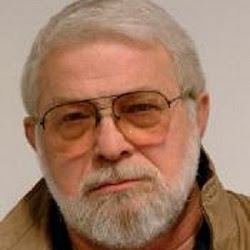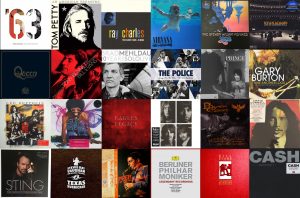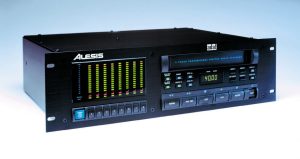Remastering is a technique applied to improve sound quality. It can be done in digital or analog domain. There are few audio manufacturers who also release their own recordings. One of them, and probably the most interesting, is the Japanese Esoteric, which remasters classical music from the world's best labels.
Esoteric is a brand owned by the Japanese company TEAC. It was established in 1987 as its "consumer" branch. It offers high-end products, including innovative SACD players. The brand's 20th anniversary was celebrated with Ludwig Van Beethoven's Overtures SACD (TDGD-90013), released by Esoteric Master Sound Works. So far, almost 250 albums with its logo have been released.
Esoteric is a company that in its lineup tries to include the entire audio chain. It offers SACD and files players, and recently also a turntable, preamplifiers, and power amplifiers. It also offers self-made remasters of classical music recordings.
This company assumes that only such a coherent vision will bring the listener closer to the original musical work, which is the recording. And there's a lot of truth to that. Such an original concept does not always work, and not everyone likes it. However, if we understand and accept it, then we will get a coherent concept that can be disputed, but which will have a special value.
In addition to the synergy in question, in the case of Esoteric, it is also important that the parent company, i.e. TEAC, offers its own proprietary technologies and solutions. Over the years, one of its most characteristic features was the Compact Disc transport mechanisms called VRDS (Vibration-free Rigid Disc Clamping System). It was one of the most refined mechanisms of its kind ever developed. That is why one of the best CD transports of all time—apart from the CEC belt drives and the Philips CD Pro-2 - was the P-0 model, prepared by Esoteric to celebrate its 10th anniversary (1997). I think that the success of the American company Wadia, which used to offer only CD players, was largely due to the use of VRDS.
But that's a prehistory. In more modern times, an important change was brought by 2003. At that time, the Super Audio CD player X-01 and the universal player (SACD/DVD) UX-1 hit store shelves in Japan, which used the newly developed VRDS-NEO transport, i.e. SACD/DVD transport. Thus, VRDS intended only for CDs became a history. Together with these products, Esoteric proposed the G-0s Rubidium clock, which was used in the Universal Music Japan mastering studios—the fact that a given disc was mastered using it was indicated by the appropriate inscription on the OBI, a disc was sold with.
Esoteric K-01XD, one of the first SACD players featuring VRDS-Altas
The latest version of the transport in question, the VRDS-Altas, can be found in players that started with the launch of the K-01XD device (test HERE). It is a Super Audio CD player with three digital inputs, two outputs and the ability to use an external clock, for example the G01X model.
I focused on SACD players for a reason. Esoteric, apart from devices, also offers SACDs. These are discs mainly with classical music of the 19th and 20th centuries, by major European labels such as Deutsche Grammophon, EMI, Erato, Decca, and Teldec. The only newcomer from outside this club is Sony Classics. In addition to the classical music, Esoteric also releases jazz albums, but only in "boxes." These are both boxes with big names—Miles Davis and Clifford Brown—from the Impulse label! or Blue Note, as well as "thematic" ones, such as 6 Queens of Jazz Vocal.
An interesting fact are three vinyl records released by this Japanese company. These were their three first titles. The lacquer for them was cut from DSD files, the same ones that were used for SACDs. These vinyl are extremely rare and very hard to buy.
TEAC
Releasing albums by audio manufacturers is not a very common activity, and on the scale in which Esoteric does it—there is no precedent. At the same time, I do not count the corporate case, which is Sony. I think that the impulse to release their own remasters of great albums was the need to face the legacy of TEAC. Its history is the history of many recording and production studios.
Its history can be counted since 1953. It was then that the Tokyo Television Acoustic Company was established to provide audio equipment for the newly established state television NHK. It later changed its name to Tokyo Electro Acoustic Company, or TEAC for short. The name change was an expression of expanding the field of activity. Since then, TEAC devices have been associated mainly with audio. To this day, they can be found in almost every production, recording and mastering studio, as well as in home audio systems.
Esoteric Mastering Center
In the booklet of the first CD with the Esoteric logo, which I have, published on the occasion of the 20th anniversary of the brand, we find a list of devices that were used to monitor the remastering process. Among the people responsible for this release, the most important was Mr. Okihiko Sugano, the owner of the Audio Lab Record label and longtime editor of the Stereo Sound magazine (more HERE). It was an extremely important character for Japanese professional and home audio. However, it is also important that this is the first and last album remastered in Sony studios. For many years Esoteric used JVC studios.
The new (on the right) and old series
Starting from the W. A. Mozart Piano Concertos No.20 K.466 & No.27 K.595 conducted by Benjamin Britton and performed by Clifford Curzon, one reads: "Mastering Engineer: Kazue Sugimoto (JVC Mastering Center)". And it will stay that way for many years (Esoteric ESSD-90014, SACD/CD 1982/2008). However, it is only from the disc with the catalog number ESSG-90053 that the proper name MasterSound Works (Brahms, Sinfonie No. 1 in C minor, Op. 68) appears on the obi. It is used by the company to this day, later also to mark its top audio products.
Wanting to become independent of external sound engineers, Esoteric finally built its own mastering studio. Officially, it was not called that yet, but it was treated as such. While in the JVC monitoring studios only D/A converters and a clock from Esoteric were used, as well as its cables, produced by Acrolink (Mexcel series), in their own studio they could also reach for amplifiers, a SACD player, and above all switch to their own mastering platform.
Messrs. Motoako Ohmachi(closer), and Masaya Touno in Esoteric Mastering Center Studio. Photo press mat. Esoteric
The choice fell on the Merging Pyramix, a DAW station that supports the DSD signal (more about the history of computer recording systems HERE). However, this station was modified by Esoteric engineers, primarily by adding a solid, linear power supply. Modifications of devices were, in fact, a standard procedure in their case. Already in the first photos, still from JVC, you can see the covers of the converter and the clock removed, in later years visible again, but not directly on the devices, but put on spacers. As it turns out, this translates into better sound.
However, January 25th this year marks a completely new era in Esoteric's work on remasters. It was then that their own studio began to work. The press release of the day reads:
Tama, Tokyo Japan January 25, 2022. Esoteric company (head office: Tama, Tokyo, President & CEO: Hiroshi Oshima) announces that Esoteric has started to operate its own in-house mastering facility, the "Esoteric Mastering VCenter" to complete the mastering of SACD software sold by Esoteric. From the SACDs scheduled to be released in March 2022, Esoteric will start selling SACDs produced by the Esoteric Mastering System.
www.Esoteric.jp https://www.Esoteric.jp/en/support/news/262, accessed: 4.11.2022.
Mr. Masaya Touno was appointed chief engineer, and Mr. Tetsuya Kato technical director for the new studio. The first of them is a young, by Japanese standards, sound engineer. Earlier, from 2006, he worked at the JVC Mastering Center, and from 2020 he was involved in remasters for Esoteric. He officially became their employee a year later. Mr. Kato has worked for the parent company TEAC since 1991, and since 2002 he has been Esoteric's chief engineer and head of its research department. He is responsible for the excellent SACD devices from the "K" and "Grandioso" series.
Remastering
Equally important, however, is that Mr. Motoaki Ohmachi remained the producer responsible for the remasters. In 1987 he was a member of the group that founded Esoteric and in 2002 became its CEO. He has been the producer of its SACD discs from the very beginning, which guarantees the continuity of the so-called corporate memory. Currently, partially retired, he advises younger colleagues on key matters. Perhaps it is Mr. Tono who has a lot to say in this tandem, because the way of remastering changed with him.
- Remastering is a process of another mastering of an older material, a different one compared to the one prepared for an original release/carrier. www.FORUMPC.pl https://www.forumpc.pl/topic/115966-remastering-co-to, accessed: 7..11.2022.
- Remastering is a post-production technique used in the music and film industries. The primary goal is to improve the quality of aging or damaged audio recordings with new technologies. It involves making a new master of a recording or original mix using the source media (original mix) in order to obtain a new and better version or to preserve the legacy. pl.FRWIKI.wiki https://pl.frwiki.wiki/wiki/Remast%C3%A9risation, dostęp: 7..11.2022.
Dictionary of Polish PWN says about remastering that it is "a computer technique that allows digital sound processing." It is also associated with computers in an entry on the English version of Wikipedia. Intuitively a remaster is associated with digital sound processing, although this is not always true. Bernie Grundman, who carries out orders for Blue Note, Craft Recordings, Audio Analogue, and previously also for Audio Fidelity, performs remasters using the full analog domain. Also Mobile Fidelity Sound Lab (MoFi) prepares remaster using DSD files, but in an analog system.
Esoteric Mastering Center Studio. Photo press mat. Esoteric
However, the intuition linking this type of art with digital technology is right, almost all contemporary music productions are created using computers, this also includes remasters. All Esoteric titles were prepared in this way. There is no mention of it anywhere, but it seems that it receives high resolution files from record companies, copied straight from the "master" tapes. Therefore, a given label was responsible for the copy and digitization, not Esoteric engineers. Sound processing is on their side.
A digital remaster can be prepared in one of two ways. In the first one we use a DAW station, but we use external devices, both digital and analog. It is working in a hybrid system. In the second one, we do not go beyond the computer, and all processing is done using digital tools, i.e. specialized software. It is called "in-the-box."
JVC studios, where Esoteric remastered its discs so far, use all types of remastering, and the way it works depends on the particular engineer. For example, JVC's most famous and experienced mastering engineer, Mr. Tohru Kotetsu, responsible for many titles released on XRCD discs, uses the analog mastering console JVC PC-77 (JVC Kotetsu Custom), the Studer A80 mastering tape recorder, but also the MAGIX Sequoia DAW station installed on a MacPro computer (more HERE).
The company materials mention that earlier Esoteric SACDs were remastered in a hybrid, but digital system. With Tetsuya Kato taking over as chief audio engineer, peripherals have been dropped and all work is done within the DAW system. The way the studio communicates with the world is also new. On the company's website you will find profiles of everyone involved in the work on the discs, a list of devices and photos. What's more, a very interesting film was prepared describing the new studio and the people associated with it.
Faith in devices used to monitor the progress of works remained unchanged. These are still Esoteric devices, but with time they become more and more sophisticated. In the list posted on the label's website, we read that it includes:
- SACD transport + DAC Grandioso D1X + G1X,
- G-2X x 2 clock ,
- Grandioso C1X line preamplifier,
- Grandioso S1 power amplifier.
The set of devices can be seen HERE.
The first release with MasterSound Works logo
The case of speakers is also interesting. Esoteric does not make its own, therefore, probably for now, it uses several third-party models. The most common models in the pictures are Bowers & Wilkins 800 D4, Tannoy and Avantgarde Acoustics. So it seems that the same material is listened to on different loudspeakers.
Mr Ochmachi says the following about the new studio:
I am sure you have experienced that the quality of the CD version differs considerably depending on the mastering method and equipment, even if the master is the same. Esoteric SACDs have always pursued the refined beauty of classical music, and now, in pursuit of even higher sound quality, we have built our own mastering center, the Esoteric Mastering System.
Esoteric Mastering System has been developed with the aim of conveying the natural and refined tones of the master sound source, full of vitality and full of life, as well as to clearly express the atmosphere of the hall. The equipment installed in the mastering center has been developed using Esoteric’s unique digital technology, and we are pleased to be able to deliver heartwarming impressions to everyone through improved musical expression.
www.Esoteric.jp https://www.Esoteric.jp/en/content/Esoteric_mastering, accessed: 7..11.2022.
Release
From the beginning, Esoteric SACDs were conceived as limited editions. Currently, the label does not provide specific numbers, but initially it was only 300 and 500 copies per title. That is why they reach absurd prices on the secondary market. For example, the most expensive ever Esoteric Box Wagner’s Der Ring Das Nibelungen (ESSD-90021/35) is listed on Ebay for around $3000, with some asking for it as much as $5500. The most expensive single releases are listed for about $750.
The form of Esoteric releases was established from the very beginning. They have the form of digipacks with thick covers and extensive booklets. Each title also comes with a 4-fold black and white reproduction of the cover (front and back) with a side of 10." The front of the discs shows the original, colorful LP cover, in the form of a square, on a colored base. The bases are in various colors and OBI always correspond with it.
The obi bears the logo of the original label and inscriptions in Japanese. At the bottom edge there is an inscription "MasterSound Works" and a catalog number. The specific number of the release and original label’s name are encoded in the latter. For example, the ESSG number means that the disc was originally released by Deutsche Grammophon, and the ESSD means that it was released by Decca.
With the announcement of the creation of the mastering center, Esoteric also began to put its logotype on the obi. The first release prepared there was a double album with Mahler's symphonies, bearing the catalog number ESSG-90252/3 (Deutsche Grammophon, 1991). In addition to the change in the approach to the remastering process and the logotype, the new series is distinguished by black, not colored obi.
The first album with material re-mastered at Esoteric Mastering Center
Let's add that we have been looking at discs from this Japanese label some time ago together with the Krakow Sonic Society: meeting № 107, January 1st 2017, more HERE.
COMPARISON
I have known the sound of Esoteric discs since they first came to the market. There are great titles among them and some that are slightly better in other editions. However, the average level has always been very high. Setting up their own studio and handing over the reins to a new man seemed like a good time to check if anything in the sound has changed, and if so, what exactly has?
HOW WE LISTENED
The CD and SACD editions were compared in the High Fidelity reference system. The source was the Ayon Audio CD-35 HF Edition SACD player. It played with the Ayon Audio Spheris III line preamplifier and the Soulution 710 power amplifier driving Harbeth M40.1 speakers placed on custom Acoustic Revive stands. Cabling consisted of Siltech Triple Crown and (powering the preamplifier and power amplifier) Acoustic Revive Power Absolute.
ALBUMS USED FOR COMPARISON
I have almost all SACDs released by Esoteric in my collection. I only need three more boxes. For comparison, I chose two discs belonging to the previous group of remasters, and one already prepared in the Esoteric Mastering Center. in fact, I compared more of them, but in order not to obscure the results, I chose the most representative ones.
1. John Coltrane Quartet, Ballads
- Impulse!/Esoteric ESSI-90133, SACD/CD (1962/2015) w: Impulse! 6 Great Jazz, Impulse!/Esoteric ESSI-9013/8 (2015).
- Impulse!/Universal Music LLC (Japan) UCCU-40001, Platinum SHM-CD (1962/2013).
2. Peggy Lee, Black Coffee With Peggy Lee
- Decca/Universal Music K.K. UCCU-9517, "Jazz The Best, No. 43", gold-CD (1956/2004).
- Decca/Esoteric ESSB-90146, SACD/CD (1956/2016) w: 6 Queens of Jazz Vocal, "Master Sound Works," Esoteric ESSO-90143/8, 6 x SACD/CD (2016).
3. Peggy Lee, Black Coffee
- Decca Records/Universal Music Japan UCCU-9517, "Jazz The Best Series, No. 17, Gold-CD (1953/2004); an album prepared using an Esoteric ruby oscillator.
- Decca Records/Esoteric ESSB-90146, SACD/CD (1956/2016) w: 6 Queens of Jazz Vocal, "Master Sound Works", Esoteric ESSO-90143/8, 6 x SACD/CD (2016).
4. Elgar, Cello Concerto/Sea Pictures, perf. by Jacqueline du Pré, Janet Baker, London Symphony Orchestra, cond. Sir John Barbirolli
- Compact Disc 1986, EMI CDC 7 47329 2.
- Compact Disc 2004, EMI Classics 7243 5 62887 2 0, "Great Recordings Of The Century" Series, remastering prepared using Prism SNS noise reduction system.
- Super Audio CD 2012, EMI Classics 9 9995590523.
- Super Audio CD EMI/Esoteric ESSW-90254, "MasterSound Worlds" Series, Esoteric Mastering.
John Coltrane Quartet, Ballads
I think that in terms of generally understood sound quality, both versions in question are comparable. However, in both the people behind them tried to achieve something different. The Platinum SHM-CD shows a darker sound, with an accent in the lower midrange. Coltrane's saxophone is more dignified in this version, as if more "smoky." The piano, on the other hand, has a less defined attack and is less "present." At the same time, you have to be careful—the sound on SACD is about 2dB louder, which needs to be corrected with the volume setting.
The Esoteric SACD brings a more open midrange sound. The saxophone is livelier with it and you can hear more of it, as if it was played from a "mouthpiece." The proximity of the microphone promotes a deeper sound of the instrument, and this version corrects this "proximity effect" to some extent. But already with the piano it brings it out of the light "fog" that was present on the Platinum SHM-CD. It is similar with the double bass, stronger, deeper and better defined on the SACD. When in the second track You Don't Know What Love Is it starts with a bow, it is clear with the Esoteric album, and less defined on the CD.
Both discs are dynamic and show a large space. At the same time, the Platinum SHM-CD seems to promote the decay of the instruments more, making the drum beats seem more dynamic. The same decay on SACD is extinguished faster.
However, I'm having a hard time deciding which version I'd prefer. The first one is so much more traditional, even old-fashioned. At the same time, it gives a great sense of the "presence" of the musicians, especially Coltrane, located in the far end of the left channel. On the other hand, SACD brings a more varied and more resolving sound. Raising the center of gravity higher in the scale, with weighting down the bass—a paradox, I know—it gives a more open and clearer sound. It is never bright or sharp, but it is clearer.
Peggy Lee, Black Coffee With Peggy Lee
Unlike Ballads, Peggy Lee's Gold CD version is 2dB louder than the SACD version. The whole sound of the CD is more "here and now." SACD, on the other hand, sounds much more pleasant and structured. The gold CD, on the other hand, is incredibly open. Lee's voice has more "throat" and the character of the microphone into which he sings is better conveyed. It's just that we get a better perspective of this monophonic recording from SACD. The trumpet that opens the Black Coffee, which opens the album, is more aggressive and open. On SACD it is more blended into the background and smoother.
I do not know what is the reason, but the effect of copying the tape, audible at the moment of stopping in the I've Got You Under My Skin, clearly audible on the CD, is almost non-existent in the Esoteric version. So either the sound engineers turned it off, thus eliminating the obvious distortion of the sound, or another "master" tape was used. The CD version seems better differentiated spatially, but also more "raw". SACD plays in a liquid, smooth way, but also blends the individual planes a bit.
This is another comparison in which it is difficult to pick a winner. Over time, however, I began to appreciate Esoteric's version. It brings a more internally complex sound, as if there was more information in it, but the Gold CD version also has that "something," i.e. immediacy, tangibility and volume, which SACD lacks a bit.
Elgar, Cello Concerto/Sea Pictures,
CD 1986
Let's start out with the obvious but a necessary statement: this is a beautiful recording - both musically and sonically. Edgar's Cello Concerto in E Minor was his last work and perhaps the best. The musicians are also in excellent shape here. The recording is from 1965, and although on the CD from the first release, which was came out in 1986, we find the inscription "Digital Recording," the recording is of course analog, which is confirmed by the SPARS code: AAD.
This is quite an old-fashioned recording, in the sense that the midrange is emphasized, and band’s extremes are withdrawn. However, the timbre of the cello was captured wonderfully, which also has a lot of "breath" around it. A characteristic feature of the early CD releases is the not very precise sound structure, which results from imperfect resolution.
But there is one more important thing - the signal was not overly compressed. This is why the first CD releases, despite the imperfections of the analog-to-digital converters needed to convert the signal from the analog "master" tape to the signal used to press the disc, sound quieter than the later ones. But that is also why the natural dynamics of the signal was better preserved on them.
Each subsequent European and American remasters, until—more or less—the second decade of the 2000s, are massacred by compression. Not all of them, but the trend is clear. The first CD releases, such as this one, are not yet subjected to the so-called "loudness war," in which the one who proposed the loudest sound on the radio won.
CD 2004
The 2004 digital remaster brings a significantly different sound. The volume level is similar in it, which indicates that the compressors were used reasonably. However, the sound is much more open and resolving. The timbres are better differentiated, and individual groups of instruments have a more distinct character of their own. The "patina" that the first reissue brought with it is gone.
The Jacqueline du Pré cello has a better expression, a wider color palette. Anyway, the whole orchestra sounds clearer. This is not a brightening, but a higher resolution. This is an important distinction. The 2004 version is simply better. Its sound is not insistent, and yet we have much more information in it, both about timbre and space. The sound of the foreground is positioned further away with it than on the CD from 1986, and yet the cello has more expression and is more "present."
SACD 2012
The 2012 SACD version is yet different. And it is exceptionally good. Its sound is completely different from the two previous ones. The whole sound is withdrawn with it, which makes us sit in real space, in the audience, and not in the first row, or even right in front of the symphony orchestra. Despite this, the instruments are clear and selective. The timbre of the whole seems darker than in the CD version from 2004, but the resolution is higher.
The most important thing, however, is that this version is incredibly elegant. It has everything you would expect from a sophisticated recording. The producers clearly wanted to accommodate the scale of the orchestra into a listening room, while maintaining its internal proportions. So the sound is quite dark, but also selective.
SACD 2022
As I said, the SACD from 2012 is great. However, a short moment with the Esoteric version is enough to come to the conclusion that it can be done even better. This latest remaster brings together all the best features of the previous three versions. So we have a deep, resolving sound with a tonal wealth. The orchestra is withdrawn, as in the 2012 version, but it can be heard in a much better way. It is closest in terms of tonality to the CD from 1986, but with it we get a much better resolution.
If I had to bet on something, it would be that the same PCM 24/96 files were used for the Esoteric reissue, which were used for the 2012 reissue. This is indicated by the perspective and general nature of the presentation. And yet, the mastering engineers of this Japanese company extracted much more from the same files. The slight muffling of the sound, which I heard on discs from before the establishment of the Esoteric Mastering Center, disappeared. But there is depth and effortlessness, and also amazing velvetiness. It's simply the best digital version of this album in every way. Highly recommended!
Summary
This was not the first comparison of Esoteric releases with others. I did it both with the Krakow Sonic Society and on my own. I've never been disappointed with them. They didn't always give everything that other releases had to offer, I must admit. Usually I missed a certain tangibility, the "here and now". Esoteric preferred slightly distant, elegant sound with a rather open midrange.
But it was always a well thought out sound and, so to speak, classy. It was also coherent in terms of the sound concept, which was developed for the whole series by Mr. Motoaki Ohmachi (Esoteric, production) and Kazue Sugimoto (Victor Creative Media Co., Ltd. Mastering Center, sound engineer). It was their original vision, and even if several Esoteric devices were used in the listening sessions, it seems that the JVC studio had the greatest impact on the whole process.
Esoteric's own studio has really changed a lot. The new series is so much better. This is a real step forward, and not just looking for some small improvements. The aesthetics of the sound of the new albums is based on darkening the sound and providing much more information. Of course, we are talking about resolution. But also the clarity, i.e. the transparency of this presentation, is much greater. The slight rounding of the sound and the large scale sounds disappeared, replaced by a detailed sound. These are great remasters!
JAPAN
text WOJCIECH PACUŁA
images Esoteric | High Fidelity

























